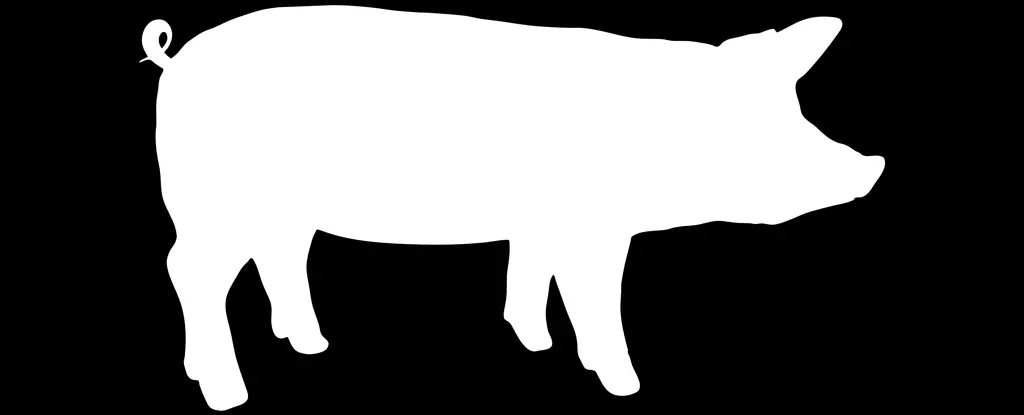The spread of the A/H5N1 strain of bird flu has raised significant concerns within the agricultural and public health sectors, particularly following the alarming discovery of the virus in a pig on a non-commercial farm in Oregon. This development forces us to assess the broader context of avian influenza and its potential risk to human health. The virus, while not currently transmissible in a sustained manner between humans, has exhibited troubling trends that warrant our attention.
Avian influenza, particularly the A/H5N1 strain, is not a novel concern; it has been impacting livestock and wildlife since its emergence. However, the strain identified as clade 2.3.4.4b has displayed a concerning ability to infect various animal populations. Originally associated primarily with birds, this strain has notably spread to dairy cattle, marking a significant shift in its transmission patterns. Reports indicate that over 400 herds in at least 14 states have been infected since 2024, illustrating the extensive reach of this virus and its capability to disrupt agricultural practices.
The implications of these infections extend far beyond animal health. Outbreaks can lead to the culling of infected poultry, profoundly impacting food production and prompting concerns about food security. Although pasteurization effectively eliminates the virus in milk, the potential for contaminated products still looms large in the minds of consumers and producers alike.
A fundamental concern surrounding A/H5N1 is its capacity for mutation, particularly concerning its potential to adapt for human transmission. Current research emphasizes the differences in receptor sites for flu viruses between birds and humans. The “lock-and-key” mechanism that allows influenza viruses to infect cells is specific to these receptors, and a fundamental change therein could facilitate a wider transmission spectrum.
Recent studies have shown that the A/H5N1 2.3.4.4b strain may be mutating in a manner that increases its potential for human transmission. An alarming finding from a human sample revealed mutations that hinted at a possibility for enhanced spread within human populations. This scenario illustrates the complexities involved in virology, where one significant mutation can alter the entire trajectory of an outbreak.
Interestingly, pigs are often dubbed “mixing vessels” for flu viruses due to their unique ability to be infected by both avian and human strains. This cross-species interaction occurs because pigs possess receptors that allow the binding of viruses from both origins. Such genetic mixing could potentially produce a new strain of influenza that is capable of sustained human-to-human transmission.
The recent case in Oregon, where A/H5N1 was detected in a pig after an outbreak among poultry on the same farm, serves as a reminder of the interconnected nature of animal health and human safety. If this virus were to infiltrate commercial farming operations, the risks associated with a pandemic could escalate dramatically.
Given the intricate relationship between avian influenza, pigs, and the looming threat of a human pandemic, a proactive approach to surveillance and reporting of infections in animals is essential. This encompasses comprehensive testing and timely responses from agricultural authorities and health organizations alike. The efficacy of early detection systems can be pivotal, allowing for rapid vaccine development in the early phases of an outbreak.
Understanding the indicators of a potential outbreak, such as spikes in pneumonia cases and severe respiratory illness, can help healthcare professionals identify emerging threats. Enhanced surveillance measures can also inform about localized outbreaks before they escalate and cross borders.
As we survey the landscape of avian influenza and its potential outcomes, preparedness emerges as a crucial factor. While current assessments from health organizations indicate that the H5N1 risk remains low for the general population, the proliferation of H5N1 in livestock raises alarm. Fortunately, the world is in a better position today than in previous influenza pandemics. New technologies advancing our understanding and detection of flu strains pave the way for designing vaccines that can be adapted rapidly in response to genetic changes in the virus.
Countries, like Finland, have already begun implementing vaccination strategies for high-risk populations, particularly those working closely with livestock, highlighting the readiness that can be achieved through proactive measures.
While the combination of advancements in medicine, vaccine technology, and surveillance infrastructure provides a foundation for combating the potential threat of avian influenza, the evolving nature of A/H5N1 requires continuous vigilance. The interconnectedness of human, animal, and environmental health necessitates a unified approach to ensure we mitigate the risks of outbreaks before they escalate into more significant concerns for global health.


Leave a Reply